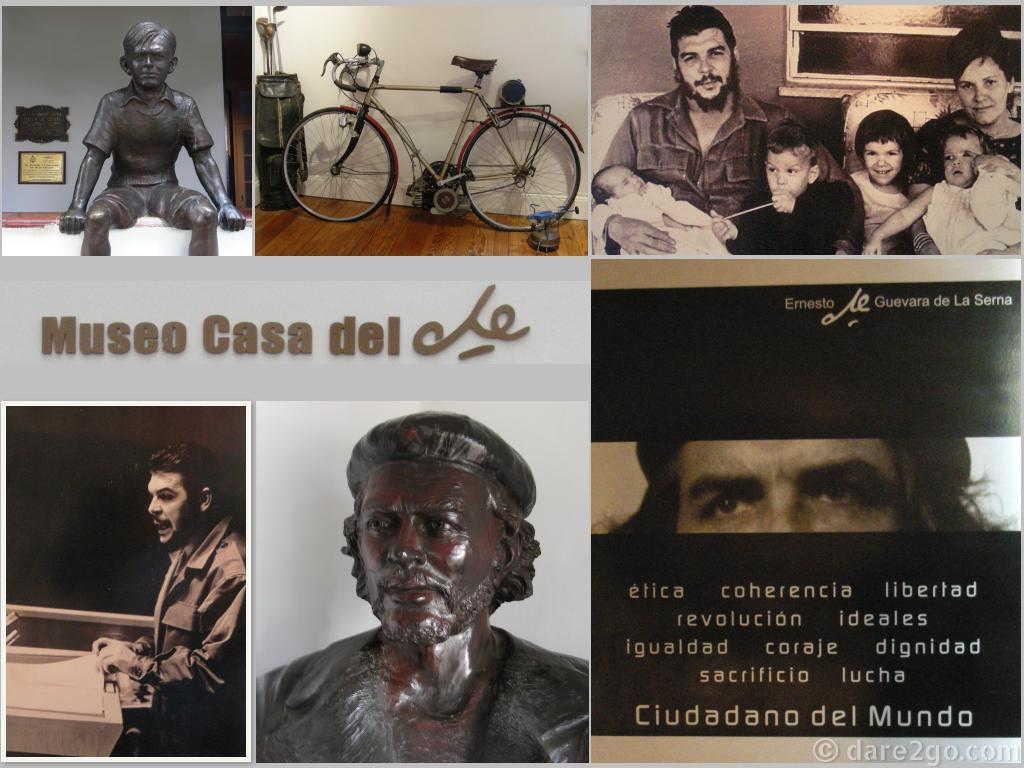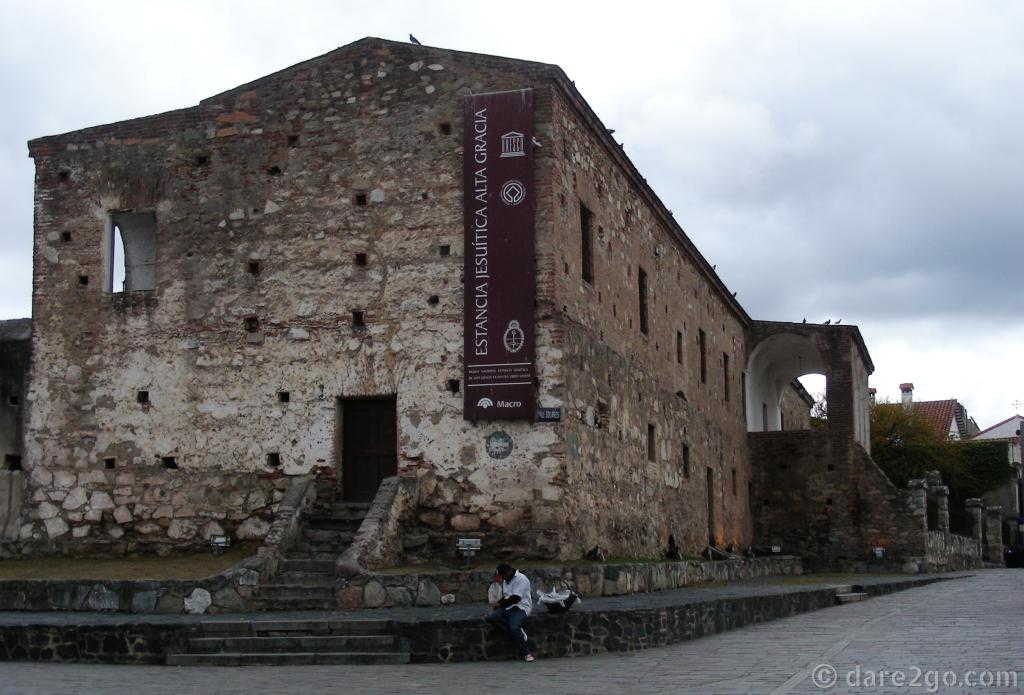Alta Gracia: a pleasant surprise in Argentina
- Pinterest1
- Facebook729
- Twitter4
- Reddit0
- Flipboard0
- Email2
- Buffer6
- 742shares
- Like
- Digg
- Del
- Tumblr
- VKontakte
- Buffer
- Love This
- Odnoklassniki
- Meneame
- Blogger
- Amazon
- Yahoo Mail
- Gmail
- AOL
- Newsvine
- HackerNews
- Evernote
- MySpace
- Mail.ru
- Viadeo
- Line
- Comments
- Yummly
- SMS
- Viber
- Telegram
- Subscribe
- Skype
- Facebook Messenger
- Kakao
- LiveJournal
- Yammer
- Edgar
- Fintel
- Mix
- Instapaper
- Copy Link
Because of our unique way of travelling, we are often surprised by experiences offered to us in places we thought we were just passing through. Alta Gracia, in the Cordoba province of Argentina, is one of those places.
When we left the German town of Villa General Belgrano , travelling north, it was with the intention of visiting at least one Jesuit Estancia (ranch or farm) before leaving this region of Argentina. It was late in the day and we knew of a place to overnight near a museum in Alta Gracia, just 50 Km away. Coincidentally, there was one of these estancias marked on our map near that town. So that was our goal.

The well cared for centre of Alta Gracia, with some colonial architecture.
As we drove through the town it made an immediate impression on us; not only did it look neat and orderly, but it felt good. We were surprised to see that the Estancia Jesuítica was right in the centre of town – we drove past it. We found the camping spot – an empty lot, 2 doors up from the Museo Casa del Che!
Since it was so close by, we decided to visit the museum the next morning. Most people I know would have some idea about Che Guevara, but who knew he spent a significant part of his childhood in this small city? He had developed asthma as a young child and suffered with it his entire life. His family moved to Alta Gracia in the hope that the climate would improve his health. This museum is in a house where they had lived.

Collage of items at the ‘Museo del Che’, Che Guevara’s childhood home in Alta Gracia
The Museo Casa del Che displays his life history. There are lots of photos and other memorabilia, and it is really well organised and labelled. I’ve seen ‘The Motorcycle Diaries’ and I recognise his face in photos, but I learnt a lot more about who he was from this visit. We received a printed guide in English, and one of the very helpful attendants also spoke excellent English. It was a good start to the day.
As we were leaving, we discovered from the very helpful attendants that it was a public holiday to celebrate the feast day of Nuestra Señora de la Merced (Our Lady of Mercy), a very significant saint in this city. For this reason the Jesuit Estancia would be closed. The entry fee for Casa del Che was 75 Pesos, but for 10 Pesos more we could visit 2 other museums on the same ticket. We had chosen to take up this option and so decided to continue on to the next museum, instead of heading into the centre to visit the estancia, as we had previously planned.

Collage of items at the ‘Museo de Arte Gabriel Dubois’, Alta Gracia
Gabriel Dubois was a French artist/sculptor who came to South America in 1895 at the age of 22. He made his name initially in Buenos Aires, and brought his family to Alta Gracia in 1932. The Museo de Arte Gabriel Dubois is also housed in the family home. After his father’s death in 1968, Dubois’ son continued to live there. He then donated the house, shortly before his death in 2007, to the municipality of Alta Gracia to turn into this museum.
The exhibits really impressed us. Dubois worked in many mediums, including wood, metal, ceramic and even mother-of-pearl, bone and ivory. Because he is a sculptor, I had expected a display of statues throughout the museum, but most of his pieces are small figurines and medallions. He produced various styles, some influenced by the local indigenous culture. There is a beautifully crafted cupboard with Inca scenes carved into the panels. Amongst his famous works is a bronze and crystal chandelier that still hangs in the Argentinean National Congress building in Buenos Aires.

Collage from the the ‘Museo Manuel de Falla’ in Alta Gracia
To complete our museum triple we then visited the Museo Manuel de Falla, who was a prominent Spanish composer of the 20th century. He came to South America in 1939 at 63 years of age, and lived in this house in Alta Gracia from 1942 until his death in 1946. We were not particularly interested in the classical music theme of this museum, but the building is quite beautiful, and the historical exhibits are well presented.
We found it fascinating that these three very different people, who lived the majority of their lives elsewhere, are celebrated in this small city with museums of such good quality. That they came here also demonstrates that Alta Gracia has long been regarded as a very ‘liveable’ city.
It was then early afternoon, so we decided to drive into the centre of the city to take a look. Since it would be siesta time AND a public holiday, it seemed like the perfect opportunity to take a look around while it was quiet. It was indeed quiet – in that there were few people around. But, the area in front of the church and the estancia was alive with activity. The church is built on one side of the estancia, and is the Parroquia Nuestra Señora de la Merced – the parish church dedicated to Our Lady of Mercy – hence the public holiday on her feast day.

Alta Gracia: this friendly Jeep owner told us about the Gaucho parade.
There was a dais installed, and people were running around setting up microphones and other electronic equipment. We didn’t know what this meant, but assumed it might be for some sort of concert. We also noticed that the streets around the plaza, which is directly in front of the estancia, were almost empty of vehicles and had in fact been blocked off in places. Eventually the owner of an old ‘jeep’, that we had stopped to photograph, told us that there would be a parade of gauchos in the evening.
That sounded interesting. We always like to take advantage of things that pop up like this. We decided to go and find a place to park for the night that we could easily find again in the dark. Then we drove back to the centre to see what was happening.
When we got back, at around 4.30, there was quite a gathering in front of the estancia, stretching down into the Plaza Manuel Solares. It turned out to be an outdoor mass with the statues of San José and Santa Maria in attendance. These saints are usually housed inside the church next to the high altar but, on this special day, Mary and Joseph are carried out on special platforms to witness the mass.
When the mass was done they were taken in procession along the closed streets, with a crowd of residents following. It was a serious and solemn procession. It seems that Our Lady of Mercy is very special to the people of Alta Gracia and once a year, on September 24, the people walk with her to honour her, to pray for her support in their individual lives, and to show gratitude for prayers answered during the previous year. There were also prayers coming from loud speakers that included asking for politicians to resist corruption, and for the success of the Pope’s visit to the USA.
This procession looked as though it would take some time so we went and had dinner. We still hoped for the gaucho parade, but had seen no evidence of horses and riders. When we arrived back at the plaza the procession was finished, but there were still people lining the streets, waiting for something. Our hopes were still alive.

Alta Gracia: the gaucho parade. The boys in front were the only ones on donkeys.
After a short wait, the gauchos came down the street from the church – and they kept on coming. There were men of all ages; some women as well – a few riding side-saddle; very young boys controlling horses that seemed to be too big for them; and lots of proud Dads carrying very young children – including babies – in front of them on the saddle. It was quite a sight, all of them dressed up in their own version of traditional gaucho costumes, and certainly worth waiting around for.

Alta Gracia: scenes from the gaucho parade. Unfortunately it was too dark for decent photos, considering I don’t own a large flash.
But I still wanted to understand what it was all about. The next morning we visited the tourist office to try to find some answers:
How did she come to be the ‘patrona’? The statue was donated to the city by the last owner of the Estancia
How many gauchos were there? More than a thousand (we estimated around 600)
Why do the gauchos ride this procession? They are the companions and protectors of Nuestra Señora
This interchange was in our very broken Spanish, with a few English words thrown in by the woman who worked there. I only felt a little wiser for the information given. It is a cultural thing that is very alien – not being a Catholic and not coming from a Catholic country puts me at a disadvantage.
On to the Estancia – our primary reason for coming this way. There are 6 Estancias, spread around in the countryside surrounding Cordoba, that were in the hands of the Jesuits in order to support their educational and spiritual work in the capital.

Alta Gracia: courtyard- of the Jesuit estancia, with church in the background.
One of these was the Estancia Alta Gracia. The Jesuits worked this estancia from acquisition in 1643 until they were expelled from South America in 1767.They built the church, the residence, and an artificial lake for producing water power for their mills, as well as developing the farm into a very successful and fruitful business.
After the Jesuits the estancia passed through a number of different hands until the last owner, Jose Manuel Solares acquired it in 1820. In 1868, his will made provision for the land to be partitioned and the village of Alta Gracia to be developed. It became the city it is today with the estancia at its centre. We visited the Estancia and, as often experienced with other museums on historic sites, the building was really more interesting to us than the exhibits.

Part of the exterior of the Jesuit estancia at the central square of Alta Gracia. (Yes, it threatened with rain all day.)
Our mostly unplanned visit to this attractive little city turned into a most enjoyable experience. Its history and the surprises it provided have prompted us to write this piece in the hope that others will be inspired to visit and enjoy it as much as we did. So if Cordoba is on your Argentina bucket list, make sure you include the 30km trip to Alta Gracia, not only for the Jesuit history, but for the other interesting persons who made this place their home at some point.
- Pinterest1
- Facebook729
- Twitter4
- Reddit0
- Flipboard0
- Email2
- Buffer6
- 742shares
- Like
- Digg
- Del
- Tumblr
- VKontakte
- Buffer
- Love This
- Odnoklassniki
- Meneame
- Blogger
- Amazon
- Yahoo Mail
- Gmail
- AOL
- Newsvine
- HackerNews
- Evernote
- MySpace
- Mail.ru
- Viadeo
- Line
- Comments
- Yummly
- SMS
- Viber
- Telegram
- Subscribe
- Skype
- Facebook Messenger
- Kakao
- LiveJournal
- Yammer
- Edgar
- Fintel
- Mix
- Instapaper
- Copy Link
















Gracias, muchas gracias por compartir mi ciudad
De nada – our pleasure!
Hi, Yasha! I’m from Argentina, Alta Gracia. What you said about my city was absolutely beautiful. It is so nice to see that people from all over the world can enjoy the history of this delightful city-town, Alta Gracia. Thanks for writing this post and for sharing our cultural background to all the people :)
Regards, Laura.
Thanks so much for writing to me Laura. We did so enjoy your city and the surprises it had for us. I am very happy that you enjoyed our post. I hope many others will read it and also visit your little paradise.
The museum looks amazing! I actually know this about Che Guevara, having travelled through Cuba. Have you watched the movie ‘The Motorcycle Diaies’?
Found you through #the weekly postcard
Yes, I saw The Motorcycle Diaries when it was first released into cinemas. I have always had an interest in Che’s life and was very pleased to see it so well displayed in this museum. Thanks for coming to visit us.
Ah, if you only know how much I envy you Yasha for being to drive through Argentina. This country has such a diverse and rich culture. Discovering small places like Alta Garcia must be great. I didn’t even know that Manuel de Falla lived and died in Argentina. Very interesting post. Thank for sharing it and for linking up to #TheWeeklyPostcard.
Hi Anda, I’m so happy you enjoyed our post. My advice to you is, don’t envy – make it happen!!!
We had never heard of Manuel de Falla, but you obviously have. I’m pleased to have been able to add to your information about him.
Wow Yasha, I love your off-the-beaten-path destination. Alta Gracia looks delightful, especially the gaucho parade :-)
Thanks for stopping by, Lyndall. We do enjoy traveling off the beaten path and Alta Gracia was a gem!
We love it too when we unexpectedly come across places that were not in the radar at all during travels! This place looks lovely, enjoyed reading about the history, seeing images of the procession and the church. Thanks for sharing with #TheWeeklyPostcard
Thanks Samiya, glad you enjoyed our post.